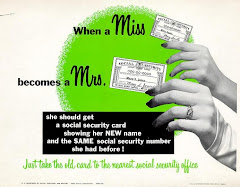May 30, 2009
Question from a reader..
The answer: If you apply for your own retirement at age 62, your benefit will be reduced by 25% and that reduction will be permanent even if you are eligible for an additional amount on your ex-husband's record then or later. You will only be eligible for divorced spouse's benefits if they are higher than what you can receive on your own and even then they will be reduced by 30% below the full spouse's benefit.
Could you wait until your full retirement age (FRA) of 66 to apply for benefits? If so, you could apply for an unreduced benefit as a divorced spouse. This will be one-half of your ex-husband's unreduced benefit. You could then postpone applying for your own retirement until you are age 70 and get a benefit that is 76% higher than your age 62 retirement benefit. This will only be to your advantage if your age 70 rate is higher than your benefit as a divorced spouse and you must meet certain other requirements to make this strategy work, but it is well worth consideration!
Want to know more? Request a Personalized Social Security Benefit Analysis to find out about strategies to help you maximize your Social Security retirement!
May 21, 2009
Do most people apply for early Social Security retirement?
The chart below shows the effect on average monthly benefits (as of 2007) for Social Security beneficiaries who applied early compared to those who waited until their FRA or later to apply:

As the chart reveals, the Average Reduced Benefit for both men and women is significantly lower than the Average Unreduced Benefit. Part of this difference is undoubtedly due to the fact that most people who delayed retirement worked longer and had higher average earnings than those who took early Social Security retirement, but even those who stopped work at 62 could have increased their monthly benefit by waiting until their FRA or later to apply.
The chart also reflects the gender gap in average monthly benefits in that more women (almost 76%) applied for reduced benefits than men (about 71%). Since women have a higher average life expectancy than men, this gender gap means that women have to live with this lower average monthly income several years longer than men who take reduced benefits.
May 16, 2009
Social Security Finances - 2009 Trustees Report
For a quick summary of Social Security finances check out the slide show below:
May 12, 2009
If I work after I start receiving retirement benefits, will my employer stop taking out Social Security taxes from my paycheck?
Is this fair? Well, consider that your benefit rate is based on your highest 35 years of earnings under Social Security. The higher your earnings average or AIME is, the higher your benefit will be when you retire. If you continue working after you start your benefits, Social Security will automatically review your record each year to see if prior year earnings would increase your benefit. If these earnings increase your 35 year average, your benefit rate will be increased effective with January of the next year. You still pay the tax but you also get the benefit of those extra earnings if they will increase your benefit rate.
How it works. Let's look at an example.
Ann applies for Social Security at age 66 (her full retirement age or FRA) with 30 years of earnings. Her benefit rate is based on the sum of her 30 years of earnings divided by 35. This means that her 35 year average includes 5 years of zero earnings. Since she waited until her FRA to apply for benefits, she can continue working and still receive her full Social Security retirement benefits. Her employer will withhold the usual 6.2% Social Security and 1.45% Medicare tax from her paychecks and report her earnings on her W-2 Form. These additional earnings will then be used to replace a zero earnings year and increase her benefit rate. Ann will receive a rate increase each year as long as she works and her yearly earnings are high enough to replace a lower year in her 35 year average.
Many women receive a lower monthly benefit because they dropped out of the workforce for a time to care for children or other family members. For these women even working part-time after "retirement" can help them make up for these lost years of earnings and therefore increase their lifetme Social Security benefits.
.jpg)





